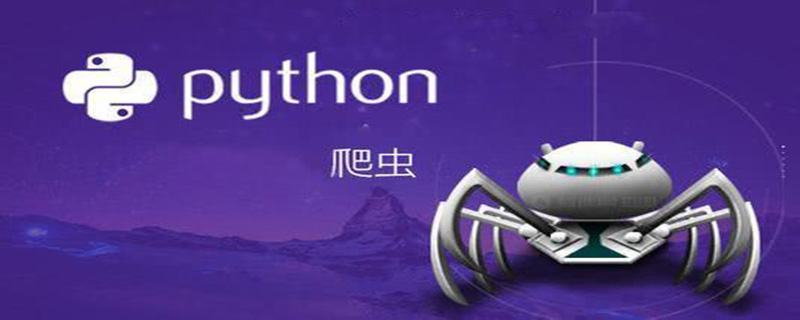
As a convenient way to collect online information and extract usable information, web crawler technology is becoming more and more useful. Using a simple programming language like Python, you can crawl complex websites using a minimal amount of programming skills.

"Writing Web Crawler in Python" is an excellent guide to using Python to crawl network data. It explains how to crawl data from static pages and use cache to manage servers. load method. Additionally, this book explains how to scrape data using AJAX URLs and Firebug extensions, as well as more facts about scraping techniques such as using browser rendering, managing cookies, and submitting forms from complex websites protected by CAPTCHAs. Extract data etc. This book uses Scrapy to create an advanced web crawler and crawl some real websites.
Related recommendations: "python Video Tutorial"

"Writing a Web Crawler in Python" introduces the following content:
Crawl the website by following links;
Use lxml to extract data from the page;
Build a threaded crawler to crawl the page in parallel;
Cache downloaded content to reduce bandwidth consumption;
Parse websites that rely on JavaScript;
Interact with forms and sessions;
Resolve protected pages Verification code issues;
Reverse engineering of AJAX calls;
Use Scrapy to create advanced crawlers.
This book is intended for readers
This book is written for developers who want to build reliable data crawling solutions. This book assumes that readers have some knowledge of Python. Programming experience. Of course, readers with experience in developing other programming languages can also read this book and understand the concepts and principles involved in it.
About the author · · · · · · ·
Richard Lawson is from Australia and graduated from the University of Melbourne with a major in computer science. After graduation, he founded a company specializing in web crawling, providing remote work to businesses in over 50 countries. He is proficient in Esperanto, can converse in Chinese and Korean, and is actively involved in open source software. He is currently studying for a postgraduate degree at the University of Oxford and spends his spare time developing autonomous drones.
Table of Contents · · · · · · ·
Table of Contents
Chapter 1 Introduction to Web Crawler 1
1.1 When are web crawlers useful1
1.2 Are web crawlers legal2
1.3 Background research3
1.3.1 Check robots.txt 3
1.3.2 Check the site map4
1.3.3 Estimate the size of the website5
1.3.4 Identify the technology used by the website7
1.3.5 Find the website owner7
1.4 Writing the first web crawler 8
1.4.1 Downloading web pages 9
1.4.2 Site map crawler 12
1.4.3 ID traversal crawler 13
1.4.4 Link Crawler 15
1.5 Summary of this Chapter 22
Chapter 2 Data Capture
2.1 Analysis of Web Pages 23
2.2 Three web crawling methods 26
2.2.1 Regular expression 26
2.2.2 Beautiful Soup 28
2.2.3 Lxml 30
2.2.4 Performance comparison 32
2.2.5 Conclusion 35
2.2.6 Add crawl callback for link crawler 35
2.3 Summary of this chapter 38
Chapter 3 Download Caching 39
3.1 Add caching support for link crawler 39
3.2 Disk caching 42
3.2. 1. Implementation 44
3.2.2 Cache test 46
3.2.3 Save disk space 46
3.2.4 Clean up expired data 47
3.2.5 Disadvantages 48
3.3 Database caching 49
3.3.1 What is NoSQL 50
3.3.2 Installing MongoDB 50
3.3.3 Overview of MongoDB 50
3.3.4 MongoDB cache implementation 52
3.3.5 Compression 54
3.3.6 Cache test 54
3.4 Summary of this chapter 55
Chapter 4 Concurrent Download 57
4.1 1 million web pages 57
4.2 Serial crawler 60
4.3 Multi-threaded crawler 60
4.3.1 How threads and processes work 61
4.3.2 Implementation 61
4.3.3 Multi-process crawler 63
4.4 Performance 67
4.5 Summary of this chapter 68
Chapter 5 Dynamic Content 69
5.1 Example of dynamic web page 69
5.2 Reverse engineering of dynamic web page 72
5.3 Rendering dynamic web pages 77
5.3.1 PyQt or PySide 78
5.3.2 Executing JavaScript 78
5.3.3 Using WebKit to interact with the website 80
5.3.4 Selenium 85
5.4 Summary of this chapter 88
Chapter 6 Form interaction 89
6.1 Login form 90
6.2 Login script extension that supports content update 97
6.3 Use the Mechanize module to implement automated form processing 100
6.4 Summary of this chapter 102
Chapter 7 Verification code processing 103
7.1 Registering an account 103
7.2 Optical character recognition 106
7.3 Processing complex verification codes 111
7.3.1 Use Verification code processing service 112
7.3.2 | 9kw entry 112
7.3.3 Integration with registration function 119
7.4 Summary of this chapter 120
Chapter 8 Scrapy 121
8.1 Installation 121
8.2 Start the project 122
8.2.1 Define the model 123
8.2.2 Create a crawler 124
8.2.3 Use shell command to crawl 128
8.2.4 Check results 129
8.2.5 Interrupt and resume crawlers 132
8.3 Use Portia to write visual crawlers 133
8.3.1 Installation 133
8.3.2 Marking 136
8.3.3 Optimizing crawlers 138
8.3.4 Checking results 140
8.4 Using Scrapely to achieve automated crawling 141
8.5 Summary of this chapter 142
Summary of Chapter 9 143
9.1 Google search engine 143
9.2 Facebook 148
9.2. 1 Website 148
9.2.2 API 150
9.3 Gap 151
9.4 BMW 153
9.5 Summary of this chapter 157
The above is the detailed content of Which book should python crawler read?. For more information, please follow other related articles on the PHP Chinese website!